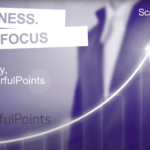So you need to create an Awesome presentation
Content is king and this is why
Now that you know why you create an awesome presentation, you need to think about the structure and flow. This leads to the question, what do you put on a slide and what really doesn’t need to be there?
Watch this short PowerfulPoints presentation to learn more.
Before we talk about that, you need to know the difference between 2 very different types of memory – Verbatim and Gist.
Verbatim
Verbatim comes from the latin verbum, meaning “word” and is where you learn something “word for word”. As you would suspect, presentations are not a good place to your audience to learn something verbatim, although many speakers seem to think you can.
Gist
“Gist” is where we get the substance or general meaning of an idea. Presentations provide a perfect forum for this.
The speaker must give context and meaning to the message. They must make the connection between that message and what it means for the audience. In other words, the presenter must get the “gist” of that key message through to the audience!
How do we create slides that support gist learning?
There is a natural tendency to want to put “commentary” on your slides. This is usually in the form of bullet points and this is part of the reasons we end up with too much text on a slide. Useful for verbatim memory, unnecessary for gist memory.
So to create an effective slide, you need to take all the “commentary” off and just leave the key takeaway on. The substance or general meaning can then be delivered by the speaker who is, after all, the most effective part of the presentation’s communication.
In our next blog, we look at how to remove text.
Learn more about how to become an influential presenter https://powerfulpoints.com.au/become-influential-presenter/
Lee Featherby (@mrpresentations)




